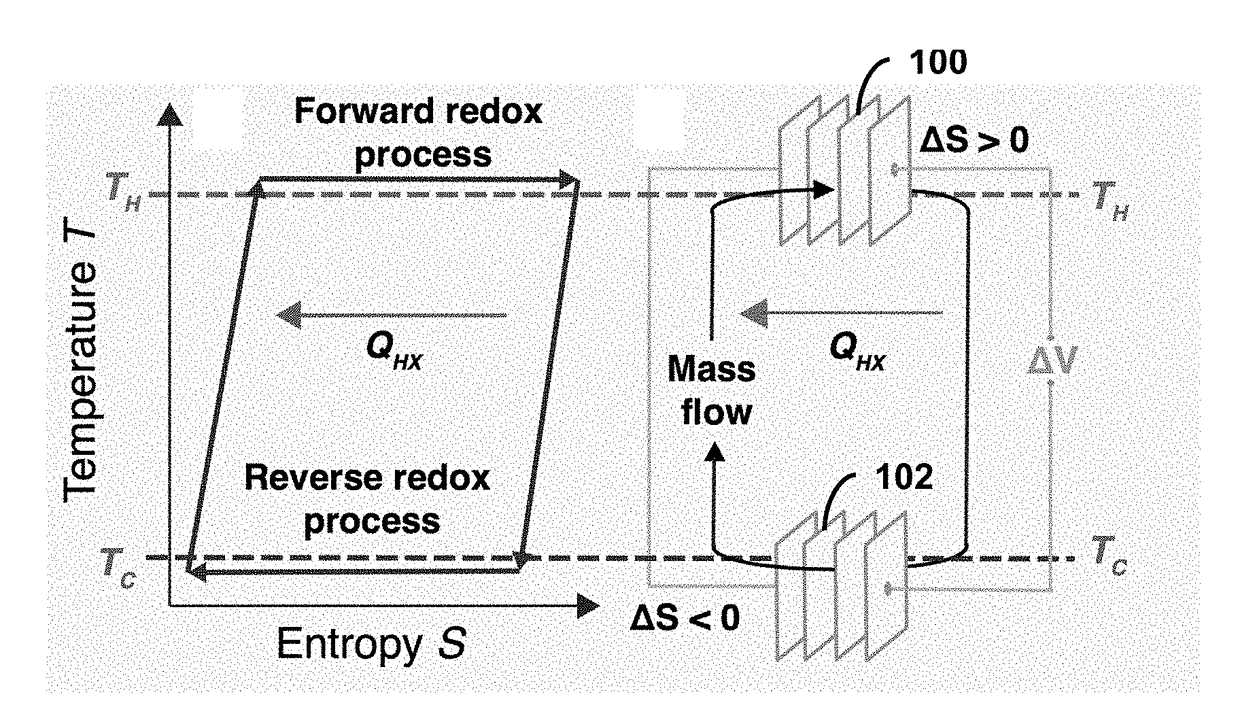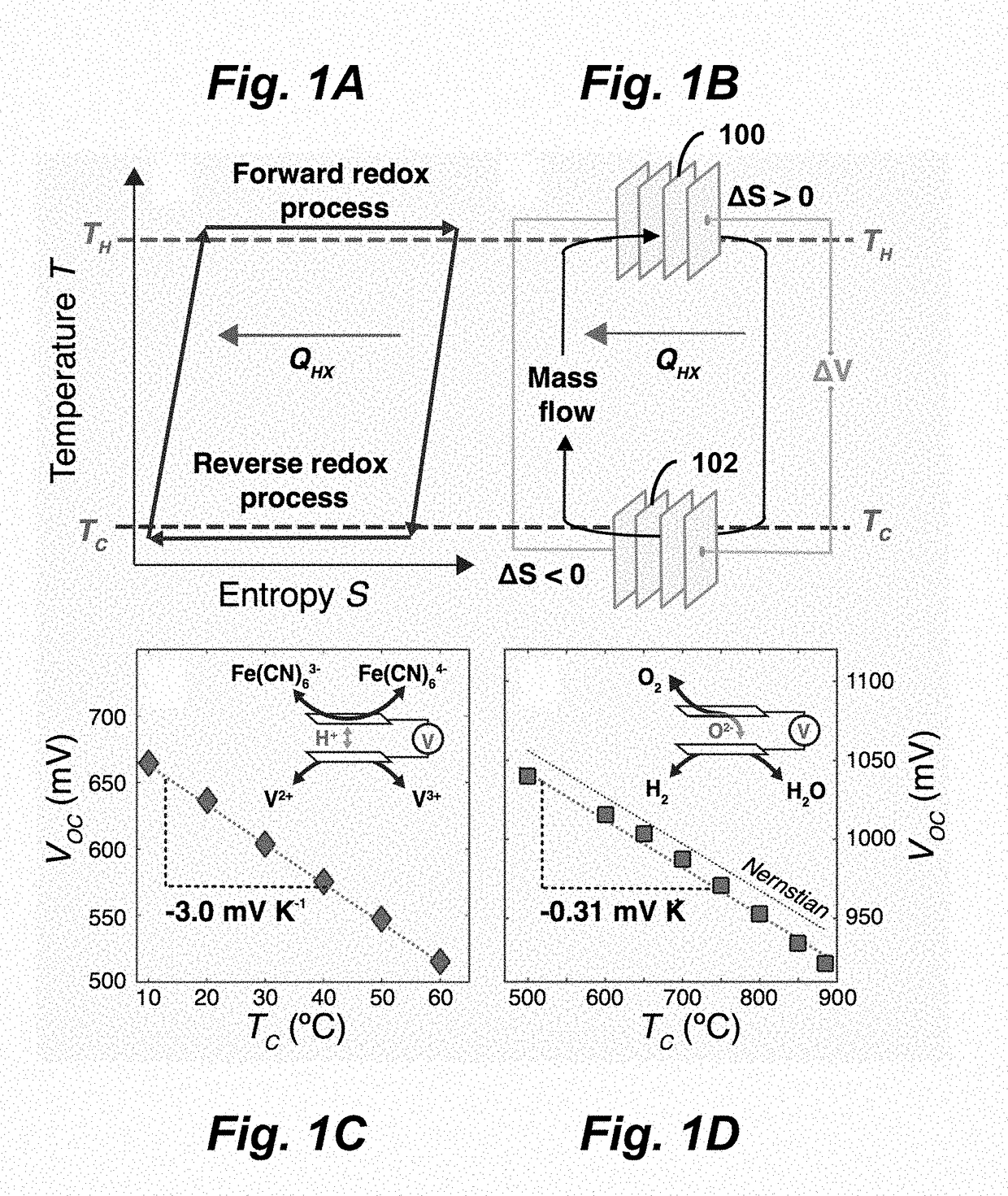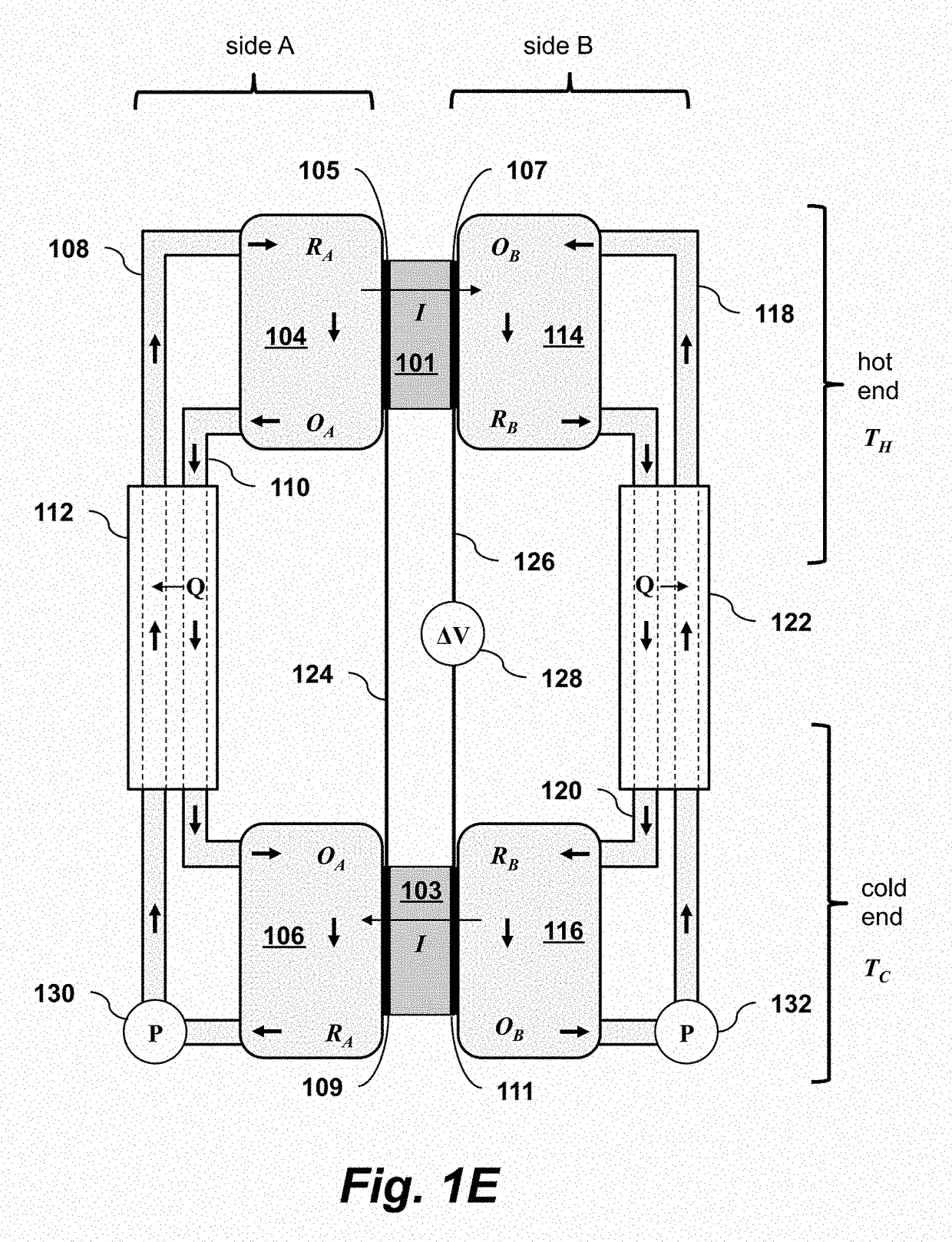Thermoelectrochemical Heat Converter
a heat converter and electrochemical technology, applied in the direction of indirect fuel cells, temperature-sensitive devices, cell components, etc., can solve the problems of reducing and affecting the performance of new direct energy conversion approaches
- Summary
- Abstract
- Description
- Claims
- Application Information
AI Technical Summary
Benefits of technology
Problems solved by technology
Method used
Image
Examples
Embodiment Construction
[0021]Embodiments of the present invention provide continuous electrochemical heat engines based on two redox-active working fluids separated by ion-selective membranes. As shown in FIGS. 1A-B, a first electrochemical cell 100 runs a forward redox reaction at a hot temperature TH, gaining entropy, and a second cell 102 simultaneously runs the reverse process at a cold temperature TC, expelling entropy. Counterflow heat exchange between the reduced and oxidized fluid streams decreases irreversible heat loss between hot and cold temperature reservoirs. This technique allows for the independent optimization of entropic, electrical, and thermal processes: whereas the redox reactions determine α, the ion-selective membranes determine ρ, and a heat exchanger between the two fluids sets an effective κ. The stability and kinetics of the redox fluid and the electrochemical cell set the cycle temperature, which can range from well below room temperature to 1000° C. Unlike in TE or TG systems,...
PUM
| Property | Measurement | Unit |
|---|---|---|
| temperature | aaaaa | aaaaa |
| temperature | aaaaa | aaaaa |
| voltage | aaaaa | aaaaa |
Abstract
Description
Claims
Application Information
 Login to View More
Login to View More - R&D
- Intellectual Property
- Life Sciences
- Materials
- Tech Scout
- Unparalleled Data Quality
- Higher Quality Content
- 60% Fewer Hallucinations
Browse by: Latest US Patents, China's latest patents, Technical Efficacy Thesaurus, Application Domain, Technology Topic, Popular Technical Reports.
© 2025 PatSnap. All rights reserved.Legal|Privacy policy|Modern Slavery Act Transparency Statement|Sitemap|About US| Contact US: help@patsnap.com



